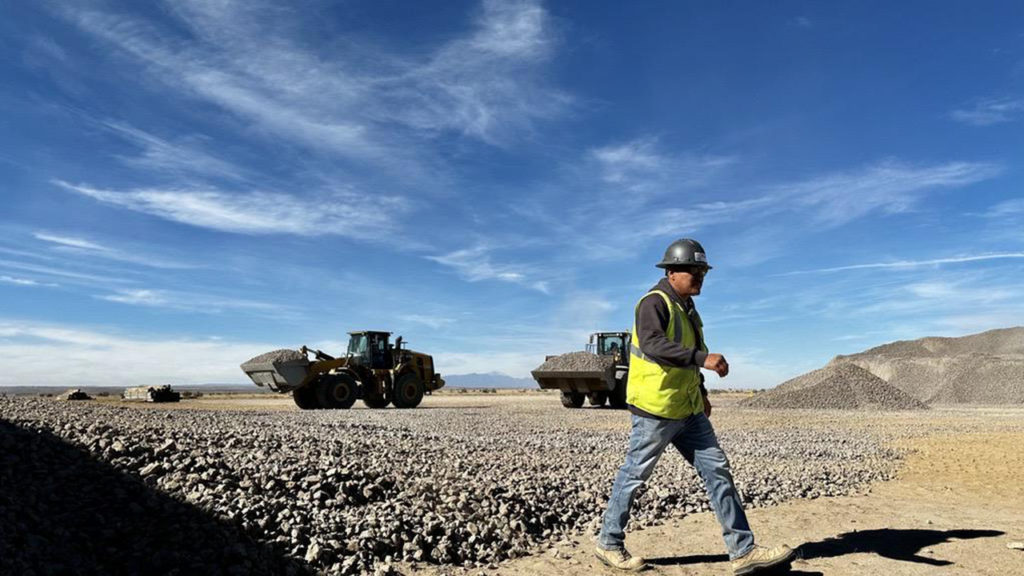
MxV Rail Opens FAST® Loop Track
Written by MxV Rail Corporate Communications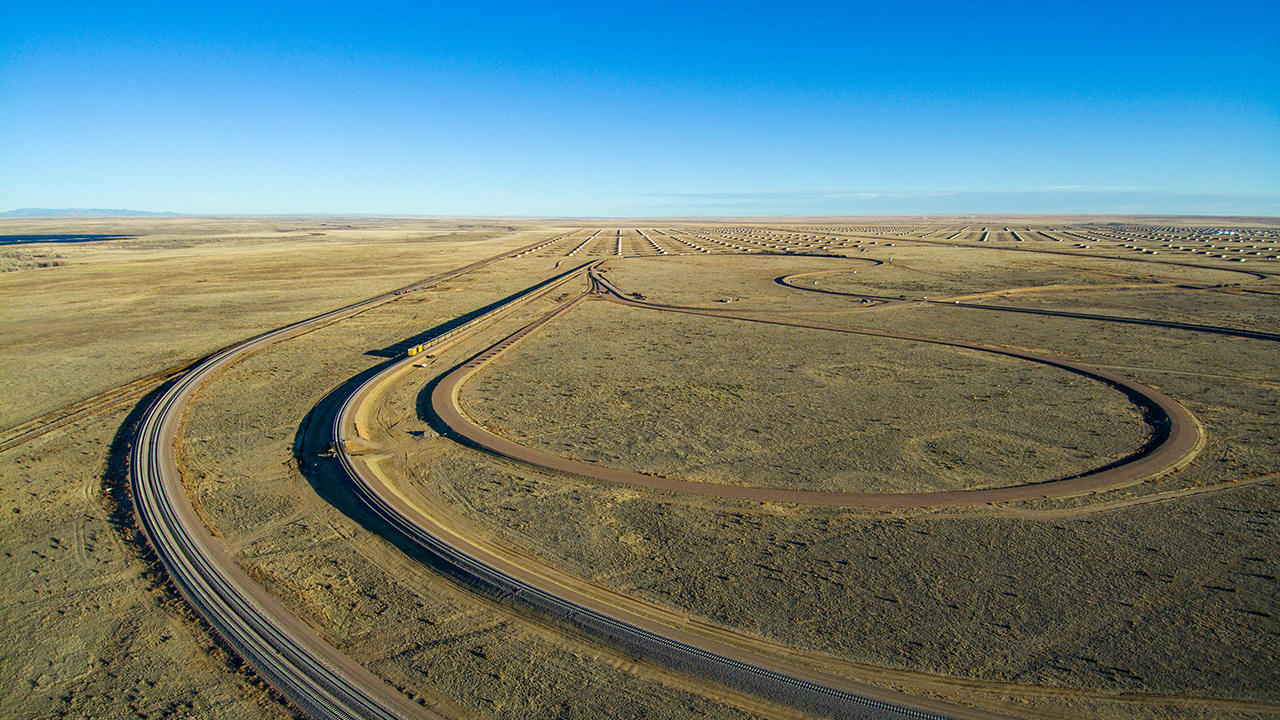
FAST Track. All photos: MxV Rail.
The Association of American Railroads (AAR) has headquartered rail industry research and test activities in Pueblo, Co., for more than 40 years. Building on this legacy, AAR’s wholly owned subsidiary MxV Rail (formerly TTCI) has transformed the organization and opened a new multi-campus operation to support the railways’ engineering, controlled on-track testing, and laboratory testing needs. MxV Rail recently completed construction on a new loop track to support the world-famous Facility for Accelerated Service Testing (FAST®) operation. MxV Rail’s research and operations teams are actively accumulating tonnage and data on the FAST track.
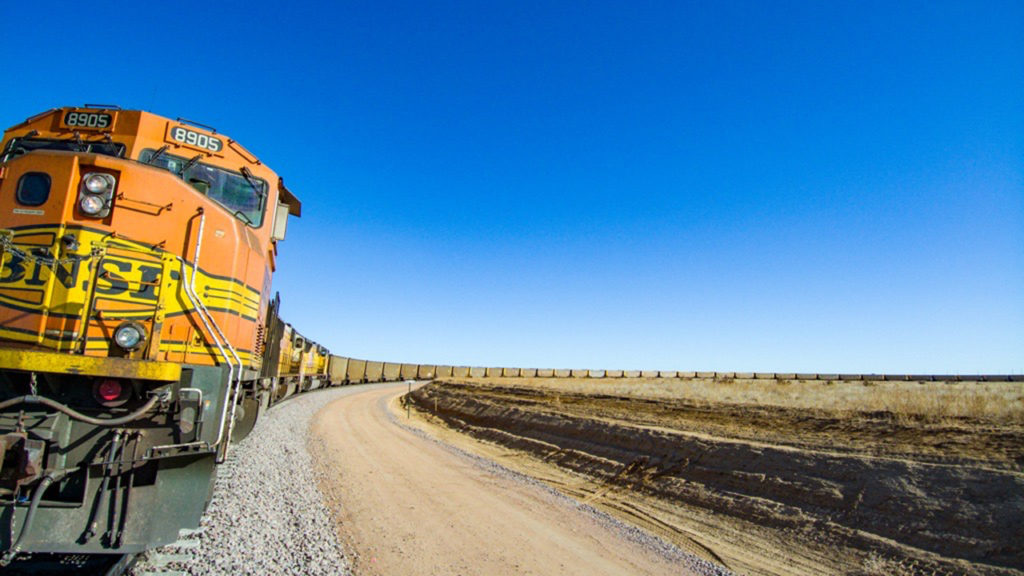
“This could be the most impactful 2.8 miles of track in the industry in terms of advancing science and technology in railroading,” said Kari Gonzales, MxV Rail President and CEO. “Being able to design and build out the new FAST loop, based on more than 40 years of institutional knowledge and expertise, was a unique opportunity. We’re grateful to our Class I advisors and industry suppliers who helped us work through the design and construction process to make these world-class engineering capabilities available to the global rail industry.”
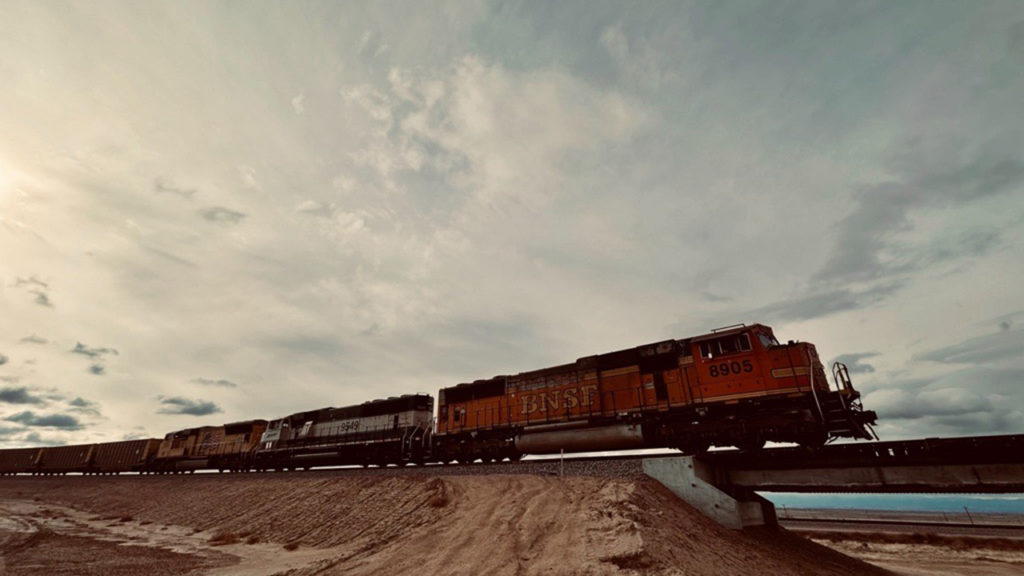
FAST operations are distinct in their ability to test components and technologies in an environment near that of revenue service, and MxV Rail is already under way accumulating tonnage to support more than 30 experiments in 2024. By accumulating 140 MGTs (million gross tons) or more of HAL (heavy axle load) traffic per year, the FAST operation is a staple of AAR’s Strategic Research Initiatives program and is considered the proving ground for new technologies tested in a real-world freight rail environment.
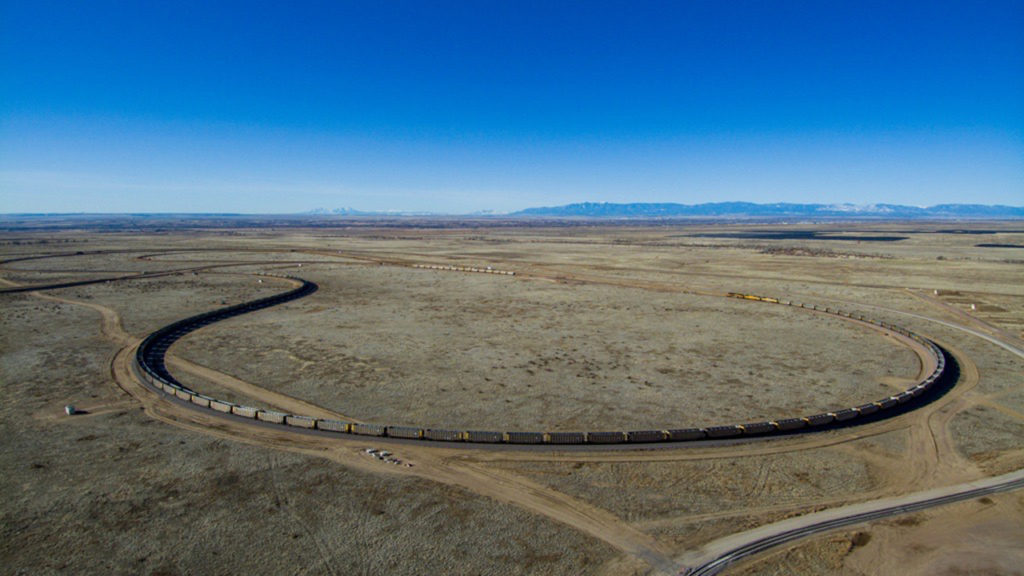
Many of the 30-plus experiments surrounding the FAST loop reflect an industry that is modernizing and optimizing railway safety. For example, some of the innovative, industry-driven research being conducted now includes:
- New technologies to detect defective wheels and broken rails.
- Testing the safety and longevity of new metallurgical formulations and processing techniques for wheels and rails from the world-wide supply community.
- Monitoring the performance and stability of new track structure through frequent assessment of strength, movement and loading.
- Comparative performance of different crossties and rail fastening systems on the ability to resist rail rollover and mitigate the risks of track buckling.
- Testing the safety and longevity of new design bridge deck components.
Brief History of FAST
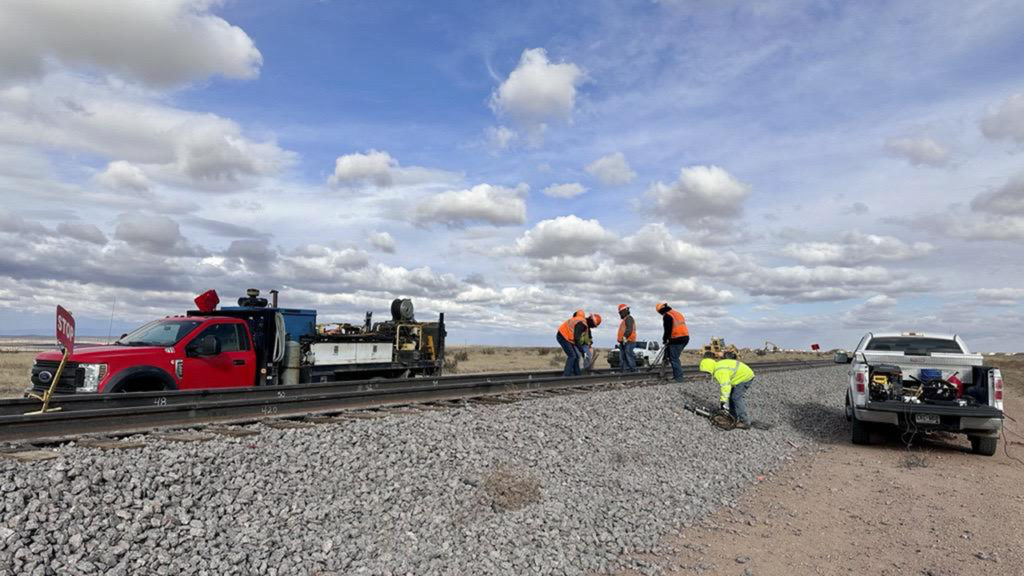
FAST was originally designed to evaluate conventional track and equipment in a faster and more controlled environment than found in revenue service. The AAR and Federal Railroad Administration (FRA) jointly developed initial design requirements in 1975. The resulting concept had multiple loops with different operating speeds and a range of testing conditions. However, the original implementation in 1976 only included one long loop pieced together from existing test tracks.
“For nearly 40 years the FAST operation has assisted the railroad industry in developing products and processes that enhance safety and efficiency,” said Mike Gilliam, Senior Director Assessment & Technology for Union Pacific. “From new and improved materials to inspection technology, FAST and MxV Rail have supported great advancements. I look forward to the opportunities the new facility will bring. The thoughtful and intentional construction will continue to provide benefits to the industry for years to come.”
A period of significant operational changes and improvements took place through the 1980s and ’90s when MxV Rail’s team decreased the length of the loop to 2.7 miles and added HAL test phases. The program then started testing standard and premium components, for tracks and railcars, with options for lubrication on or off.
FAST operations continued to accumulate tonnage (in excess of 5 billion gross tons) and provide results for hundreds of experiments and technology evaluations up to the time of MxV Rail’s move to its multi-campus in Q4 2022. While the new FAST loop may appear similar to what’s been used in the past, every aspect and detail of the design has been thought out carefully and discussed with the industry to ensure the new loop will support industry innovation well into the future.
Future Momentum with FAST
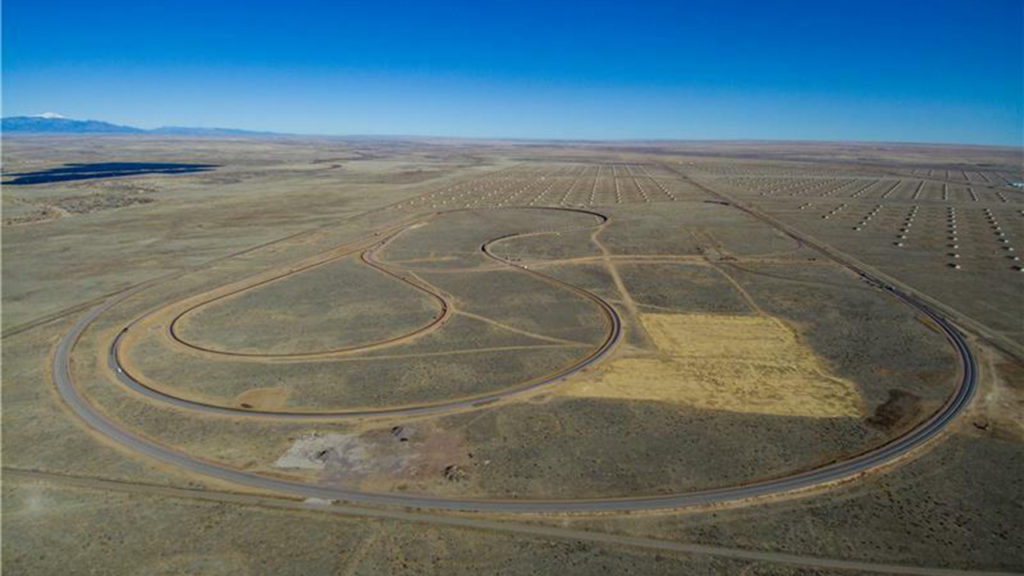
The new FAST operations are designed for efficiency and pioneering new technologies. “The opportunity to start the design process from scratch while also understanding the implications of previous track layouts was a once-in-a-lifetime opportunity,” said Chris Johnson, FAST program manager. “We knew that we needed to design the new track within certain parameters to maintain an efficient operation, yet we were able to let our imaginations have free reign and bounce ideas off various internal groups and industry stakeholders to build the next-generation test track.”
The new FAST loop has capabilities similar to prior tracks including the ability to balance between efficient tonnage accumulation and rail temperature concerns while maintaining a 40-mph test speed. It also has numerous design advantages including a reduced number of curves to provide a longer tangent, and a longer and sharper reverse curve, increased to 6 degrees, which was designed to increase the rate of wear while allowing more rail to be tested at any given time. A one-way low speed (OWLS) diamond crossing with testing on both routes provides convenient access to FAST. Additionally, other design enhancements such as being able to store and turn the train on a balloon loop within the main operating loop, and reducing the number of mainline turnouts, make the system more practical and user-friendly for operating and research teams conducting tests at MxV Rail.
A subject of much debate was how exactly to design the track curves. As the team worked through the design complexities to determine the best configuration and future research needs, MxV Rail considered multiple services and test scenarios. For example, having a “figure 8” shape would allow for both left- and right-hand curves on every lap to exercise the cars in a realistic way, but did not provide sufficient tangent track within the desired total loop distance using the industry’s requested curvature ranges, nor did it provide an unlubricated curve desirable for rail wear testing. The new FAST loop’s design succeeds in addressing all the above and allows the research team to adjust the lubrication conditions on one curve independent of the rest of the trackwork for testing.
In addition to the physical track, multiple systems were installed to ensure safe operations. Commercial wayside systems for measuring bearing and wheel temperatures and detecting dragging equipment were installed, along with a custom rail break detection system to ensure safe operations. Truck performance detectors were combined with longitudinal rail stress measurement and rail temperature readings to monitor both rail and train performance. Plus, onboard systems continuously monitor track geometry and ride quality changes on every lap. Tying these and other data collection systems together is a new data management system enabling better access to FAST data than ever before.
With an eye always to the future, MxV Rail is already working to stay ahead of the curve and plan for future updates and experiments. Ongoing changes at FAST, coupled with the support of AAR’s Strategic Research Initiatives program and industry partners, will allow FAST to continue producing insights for years to come.
MxV Rail regularly advises clients on how to move from small- to large-scale testing that culminates with FAST. MxV Rail’s software division and computer simulations are often the starting point to solve an engineering challenge or answer a research question. From there, a project might go to laboratory testing under controlled conditions. The more realistic testing, which emulates the conditions of revenue service, happens with FAST in a secure and extremely realistic environment.
When the FAST program is running, with a heavy train passing every 4 minutes and collecting streams of data, it is an awe-inspiring sight.
